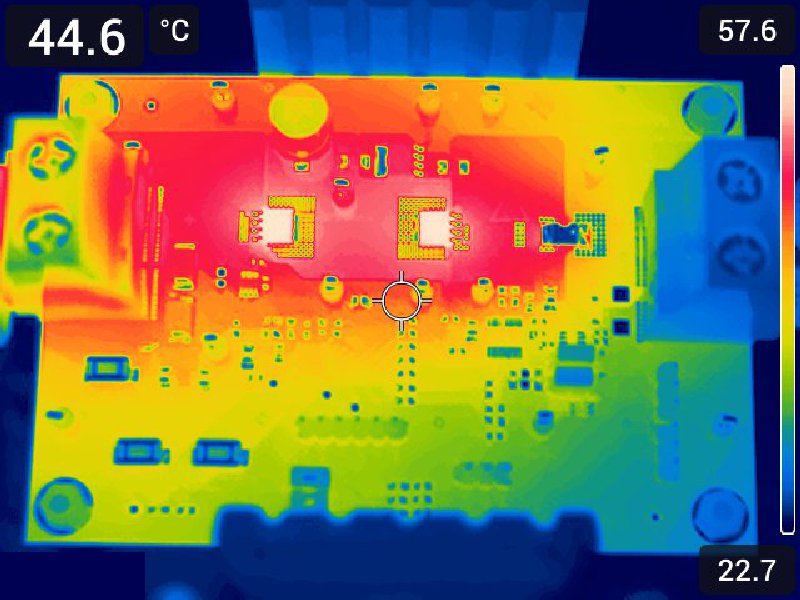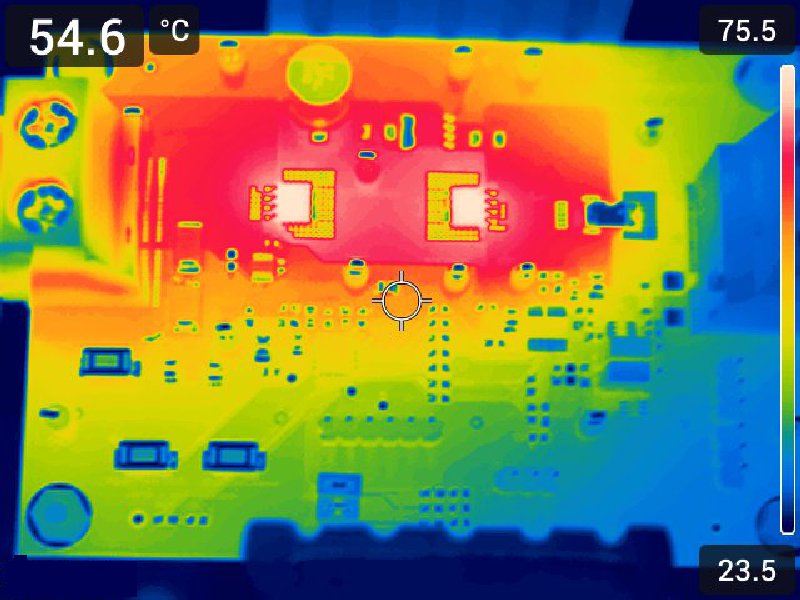TIDUF43 August 2024
- 1
- Description
- Resources
- Features
- Applications
- 6
- 1System Description
- 2System Overview
- 3System Design Theory
- 4Hardware, Software, Testing Requirements, and Test Results
- 5Design and Documentation Support
- 6About the Author
4.4.7 Thermal Testing
The TIDA-020065 thermal performance was captured for both 25A and 30A continuous current. For both these tests, the system was allowed to reach thermal equilibrium before capturing a screenshot with a thermal camera. The ambient temperature of the room was 25°C, so for Figure 4-17 a temperature rise of 55.5°C was observed for the FETs.
 Figure 4-16 25A Load at Thermal
Equilibrium
Figure 4-16 25A Load at Thermal
Equilibrium Figure 4-17 30A Load at Thermal
Equilibrium
Figure 4-17 30A Load at Thermal
Equilibrium